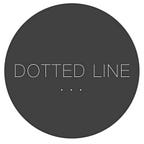Time to deconstruct Thinking
Design Thinking, Lateral Thinking, Platform Thinking, Critical Thinking, Out-of-the-box Thinking, Systems Thinking, Scenario Thinking, Thinking about Thinking. These days, it looks like there is more thinking going on than ever before.
Thinking itself is an interesting word. It is a verb that is in the present continuous tense. This implies some sort of process, sequence of actions and there is the intuition of time passing.
All these thinking-types seem to imply they offer an actual different way of thinking. A series of new steps to take control of your mind and as-if they solved “thinking” about a specific subject.
But here is the kicker: you already have the ability to think. It is you who is doing the thinking, not these thinking-types. You can not -yet- outsource the actual thinking.
Adoption
What these thinking-types offer is a set of ideas, examples and tools. They contain the mental scaffolding to tackle big, complex, different and perhaps unintuitive questions and offer aspects to consider when thinking about something.
Let’s take Design Thinking as an example. While there is a process, most experienced Design Thinkers or Service Designers will agree that is it more a mindset, than a rigid sequence of actions.
As you grow competent and familiar with the tools and their limitations, you learn to cherry-pick and adopt them to the situation at hand.
For most of the thinking-types, the tools and concepts will be relatively easy to embrace and adopt. They have immediate returns and their value is clear, there is low risk in trying them and lots of people have applied them with great success.
For others, this may not be the case. They are the counterintuitive ones. The type of concepts and ideas that require a paradigm shift. Followed by a period of serious brain re-wiring to get you out of auto pilot.
Despite that, these are the tools that have the highest payoffs in the long run. They tackle systemic change and because they are foundational, they influence your being and how you experience the world.
Deliberate thinking
In Thinking Fast and Slow Dr. Daniel Kahneman, together with co-author Dr. Amos Tversky, described their life’s work on how humans make decisions.
They found two systems of thinking: one based on hard-wired biases and rules-of-thumb (System 1) and the other based on controlled thoughts (System 2). For these two systems they coined the terms Thinking Fast and Thinking Slow.
Most of our thoughts result from the fast and efficient but somewhat lazy, System 1. This is what you can also call intuition. Thinking Slow takes a lot more effort and hence is not readily deployed.
It is in this battle between these two systems that the counterintuitive thinking-types fall.
They are hard to adopt because you need to overcome the natural and the easiest tendency of intuition. To master them they need deliberate practice until -if ever- a new intuition is constructed.
When learning about these concepts and fallacies in thinking, it is often easy to see others do thinking wrong. You scrutinise what they say and can check in real-time if there is an error or something that sets of an alert <ding!>.
What is a lot harder, is to self-correct. This is when the observer and the observed are the same person. You are your mind! So the trick lies in applying these to your own thoughts, to have a dialog with yourself.
Expecting this to happen immediately and in real-time is unrealistic. You need to make time to reflect on what you said, what happened in a discussion and on your day. By inspecting your thoughts you can adapt your thinking.
Another way to practice this thinking-about-thinking is in writing. Writing brings an extra level of time and with this an opportunity of inspection.
Over a period of time, these skills will start to feel natural and slowly it becomes habit.
You do the thinking and the tools aid the thought process. The tools are there to offer perspective and a frame of reference to deconstruct a concept. In a way, the tools shape our thinking, and our thinking in turn shapes the tools. And together they progress our understanding of the world.
